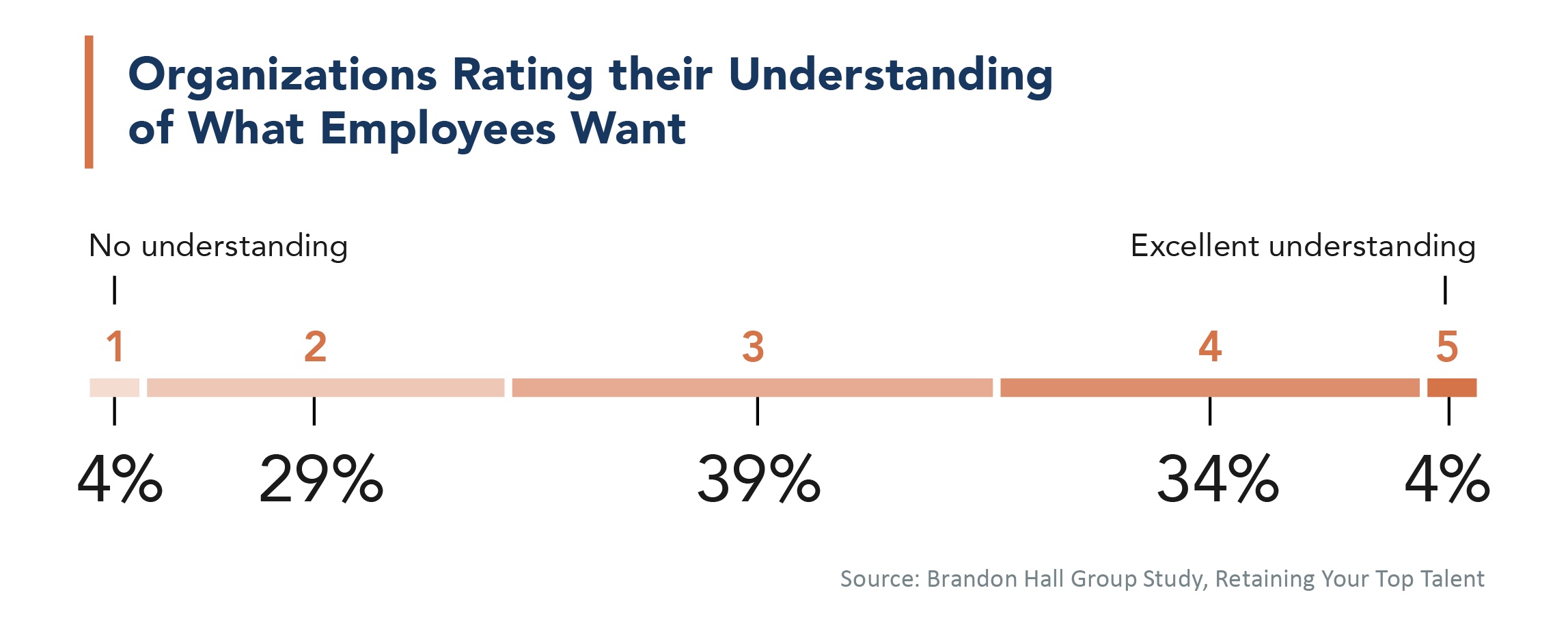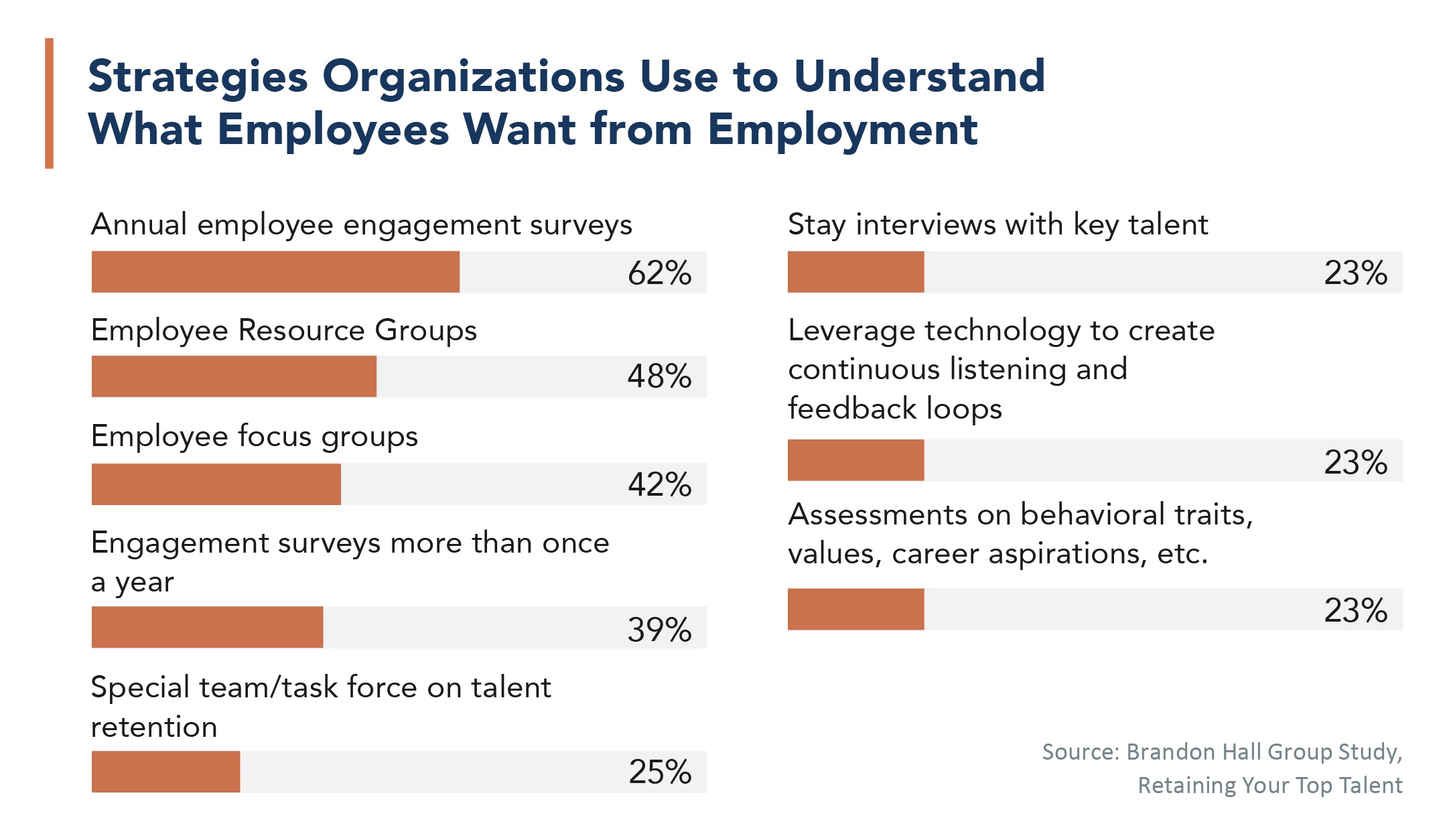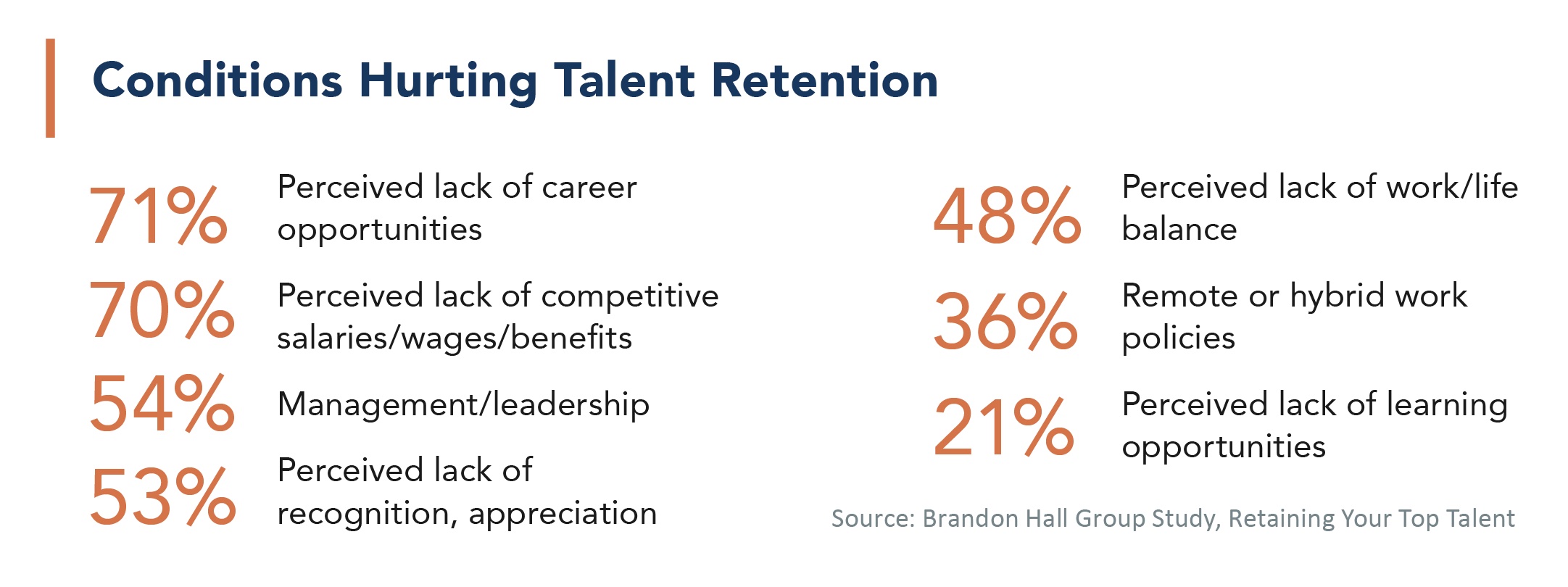
According to Brandon Hall Group’s study, Retaining Your Top Talent, less than one-third of organizations describe their efforts to retain top talent as successful. It’s not surprising, therefore, that fewer than 4 in 10 employers (38 percent) say they strongly understand what their employees want or expect from their employment.

Overcoming the Challenges
It is nearly impossible to retain an optimal percentage of your talent if you don’t understand what employees value—and don’t value—in your organization and in their jobs.
When technology can create an array of connections across large and dispersed enterprises, most organizations still use annual employee engagement surveys to understand what employees want or need from their employment.
Nearly half of all organizations use employee resources and focus groups to understand workforce needs, which is essential. But a program of continuous listening—featuring multiple methods and leveraging technology and analytics whenever possible—is critical to keep up with evolving workforce dynamics.

4 Powerful Ways for Leaders to Have a Positive Impact on Talent Retention
1. Think of Talent Retention as an Outcome of Employee Experiences
Talent retention is not one thing, as the name suggests. It is important to remember that talent retention is not a strategy but an outcome of how employees value their experiences with an organization and how those experiences relate to their aspirations. Therefore, employers must deeply understand what employees want, need, and value. This is a difficult proposition— especially in larger organizations—because a workforce has many personas based on age, gender, race, location, function, level, and many other factors.
2. Listen Continuously and with Purpose
Feedback from employees is imperative to understand their experiences, but their perspectives can shift frequently. Most employers operate in an environment that is volatile, uncertain, complex, and ambiguous. Therefore, relying on annual or periodic engagement surveys to understand employees’ needs means the company will always lag in its understanding of workforce trends and issues.
Our research shows that progressive organizations employ continuous listening strategies, including frequent online surveys on specific topics, sentiment analysis, focus groups, employee resource groups, and stay interviews. Technology is an excellent enabler for collecting different data types and analyzing them to provide essential insights, not just on the workforce but on specific employee groups or personas.

3. Assess Employees’ Experiences Through Their Eyes
Most organizations view employee experience through the lens of the business. To truly understand what it takes to keep employees highly engaged and committed to pursuing a career with the organization, employers must view experiences from their employees’ perspectives. Brandon Hall Group research organizes employee experience into six categories:
- Wellness/well-being, which includes psychological safety
- Alignment with the mission, vision, and goals of the organization
- Learning and development
- Sense of belonging
- Career advancement
- Feeling valued
4. Take What You Hear and Build Talent Strategies Accordingly
Through these insights from employees and other internal and external developments, employers are in a better position to create value for employees in alignment with business needs proactively. The goal is to be proactive whenever possible in understanding what the workforce needs to be successful and feel valued. A company’s ability to proactively engage different workforce segments determines its ability to retain talent.



